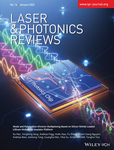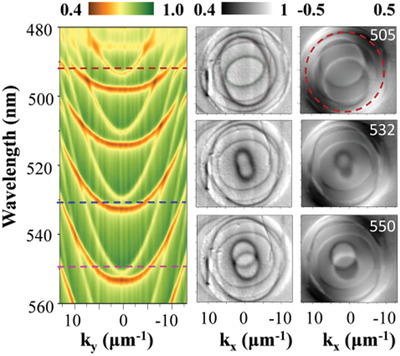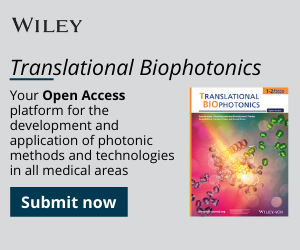Journal list menu
Export Citations
Download PDFs
Front Cover
Mode and Polarization-Division Multiplexing Based on Silicon Nitride Loaded Lithium Niobate on Insulator Platform (Laser Photonics Rev. 16(1)/2022)
- First Published: 07 January 2022
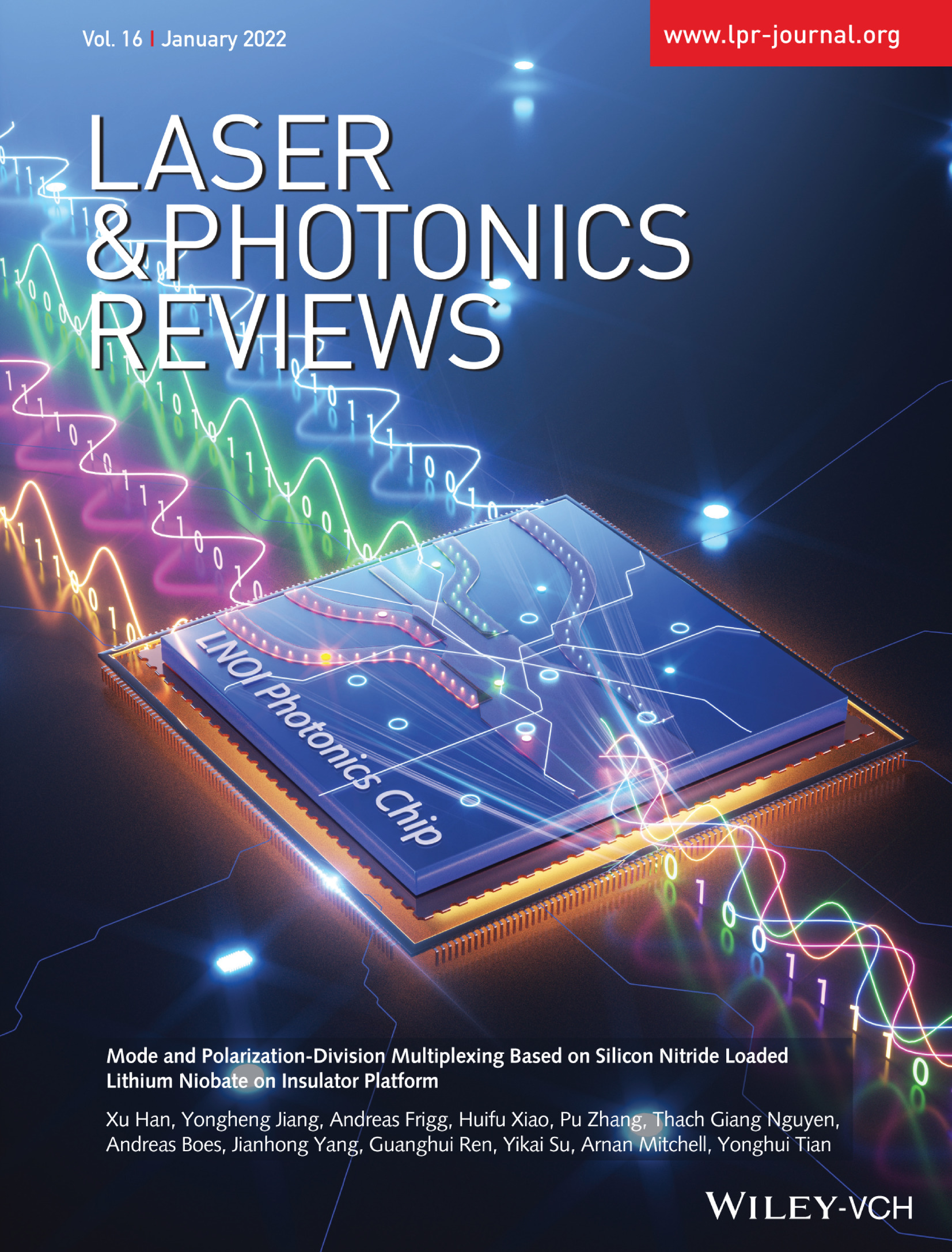
(De)Multiplexing Technologies
In article number 2100529, Yonghui Tian, Arnan Mitchell, Yikai Su, and co-workers experimentally demonstrated mode and polarization-division multiplexing on a thin-film lithium niobate on insulator (LNOI) platform. By introducing silicon nitride as a loading material atop the LNOI photonics chip, the devices can be integrated with high-speed electro-optic modulators to achieve high-capacity and low-cost photonic integrated circuits suitable for data communication applications, while avoiding the direct etching of lithium niobate.
Inside Front Cover
Observation of Quadratic (Charge-2) Weyl Point Splitting in Near-Infrared Photonic Crystals (Laser Photonics Rev. 16(1)/2022)
- First Published: 07 January 2022
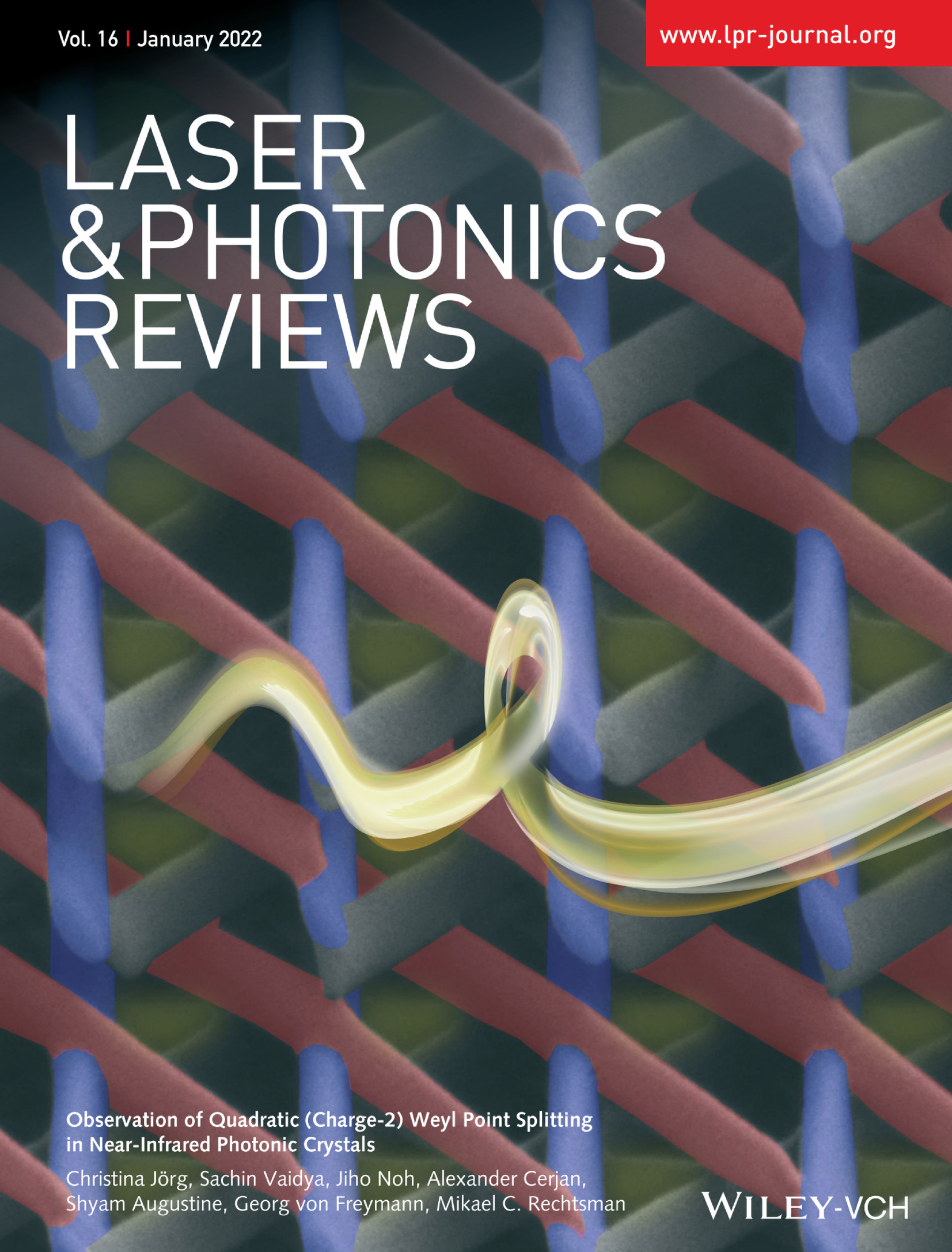
Weyl Points
Weyl points are topological degeneracies in the band structure of periodic media that are robust against perturbations due to their integer topological charge. In article number 2100452, Christina Jörg and co-workers experimentally demonstrate splitting of a quadratic Weyl point of charge-2 into two linear Weyl points with charge-1 in 3D micro-printed photonic crystals and measure their angle-resolved spectrum in the near-infrared via Fourier-transform infrared spectroscopy.
Inside Back Cover
A Review of Fiber Optofluidic Microlasers: Structures, Characteristics, and Applications (Laser Photonics Rev. 16(1)/2022)
- First Published: 07 January 2022
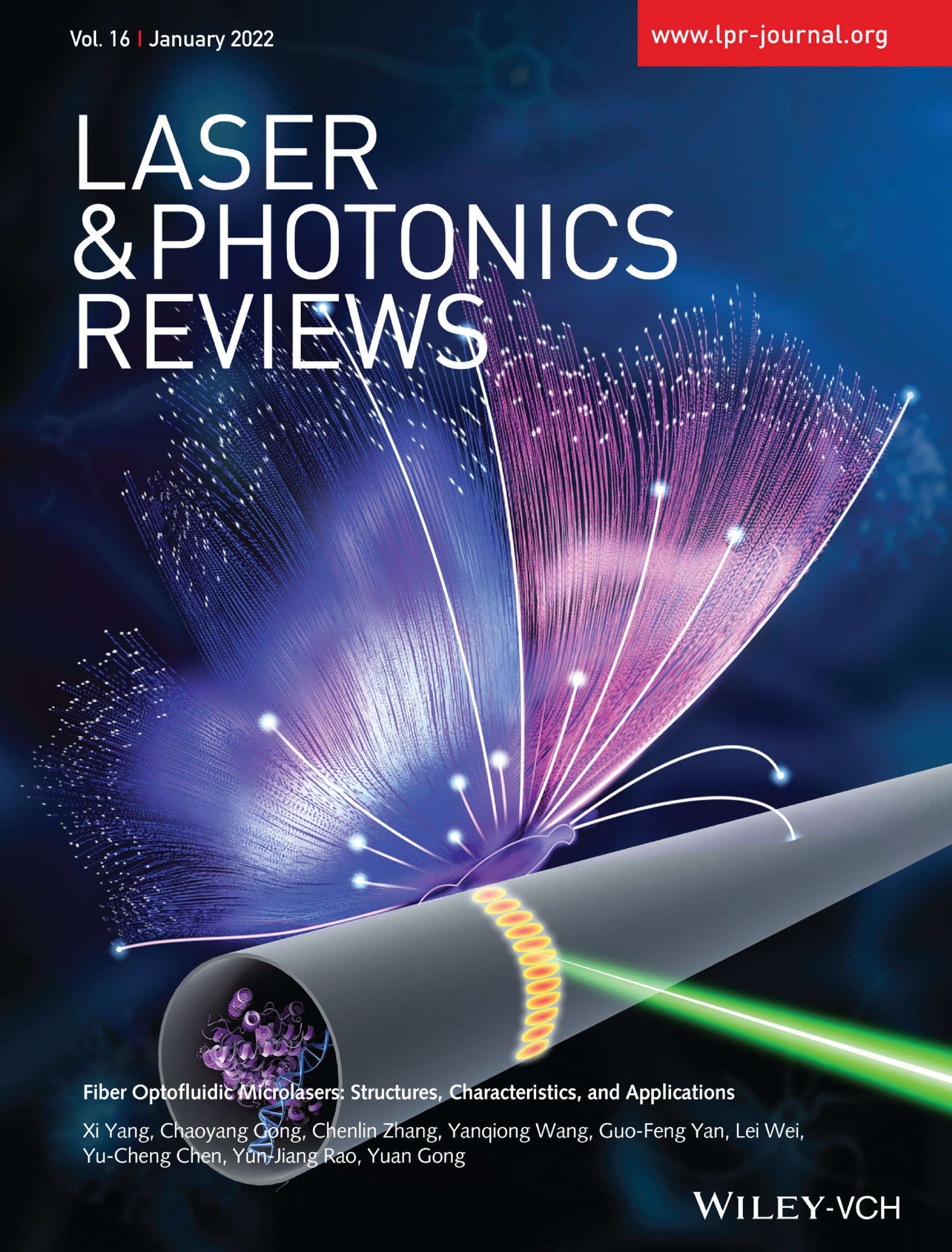
Fiber Optofluidic Microlasers
Fiber optofluidic laser (FOFL) is one of the multidisciplinary frontiers that has a deep rooting in the fields of lasers, optical fibers, and microfluidics. In article number 2100171, Xi Yang, Chaoyang Gong, Chenlin Zhang, Yuan Gong, and co-workers focus on the recent advances in FOFLs and highlight the uniqueness of optical fiber for lasing and sensing. Typical biochemical applications and challenges of FOFLs are also given.
Back Cover
Lasing in a Hybrid Rare-Earth Silicon Microdisk (Laser Photonics Rev. 16(1)/2022)
- First Published: 07 January 2022
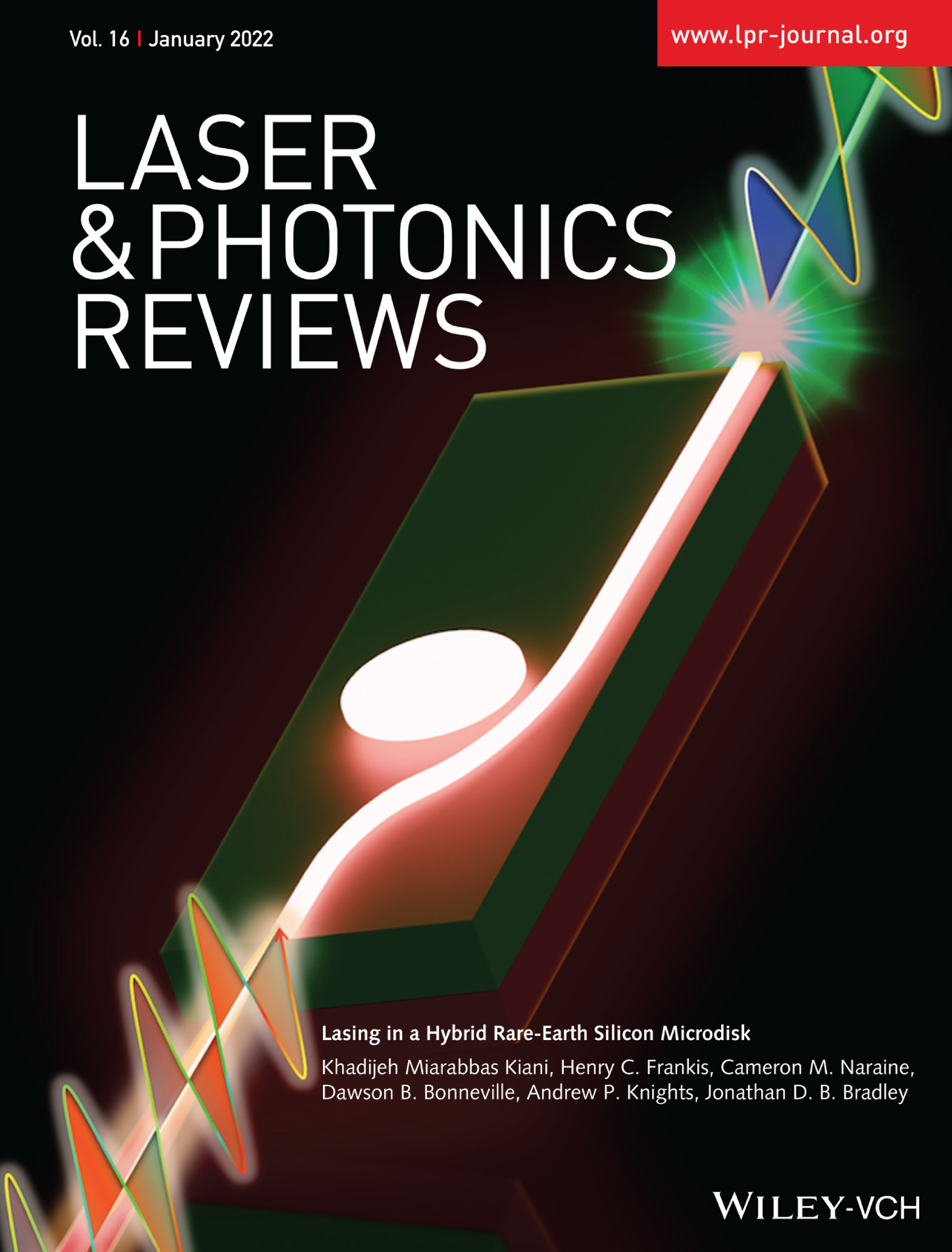
Silicon Lasers
In article number 2100348, Khadijeh Miarabbas Kiani and co-workers show that optical gain and lasing in an ultra-compact hybrid rare-earth silicon microdisk resonator emits at 1.9 µm, with an internal slope efficiency of 60% and >1 mW on-chip output power. The thulium laser is fabricated using low-temperature, and straightforward wafer-scale post-processing steps, which opens the potential for large-scale integration of monolithic 2-µm-band amplifiers and light sources within advanced silicon photonic microsystems.
Masthead
Reviews
Kerr Frequency Comb Interaction with Raman, Brillouin, and Second Order Nonlinear Effects
- First Published: 12 November 2021
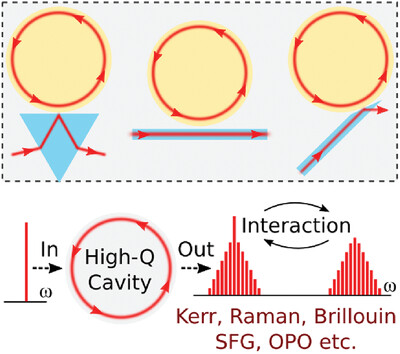
Cavity Kerr frequency comb has emerged as a fast-growing field attracting significant research interests. This review focuses on the interaction of Kerr frequency combs with other cubic and quadratic nonlinear photonic effects. Recent developments of multiband Kerr–Raman, Kerr–Brillouin, Kerr–second-harmonic generation are summarized. Novel microcombs such as electro-optic combs and quadratic combs are also discussed.
Laser Writing of Color Centers
- First Published: 13 November 2021
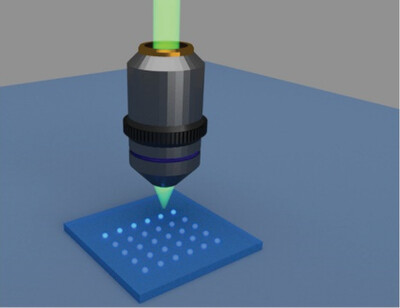
Laser writing has been proven as a powerful approach for preparing color centers in solids. Here, recent advances of laser writing color centers in various promising solid-state quantum systems are reviewed, from bulk crystals, such as diamond, silicon carbon, to low-dimensional nanomaterials, such as single-walled carbon nanotubes, 2D layered materials, and quantum dots.
Fiber Optofluidic Microlasers: Structures, Characteristics, and Applications
- First Published: 10 December 2021
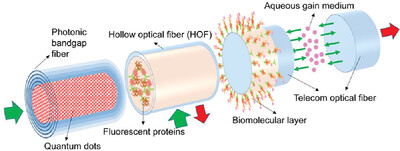
Fiber optofluidic laser (FOFL) is a new type of laser that employs an optical fiber as its laser resonator and microfluidic channel. Here the recent progress in fiber optofluidic lasers is reviewed, including the unique properties of optical fibers, the structures and fabrication of fiber microresonators, the characteristics and the applications of FOFL as microlasers and biosensors.
Original Paper
Directional Coupling of Emitters into Waveguides: A Symmetry Perspective
- First Published: 15 November 2021
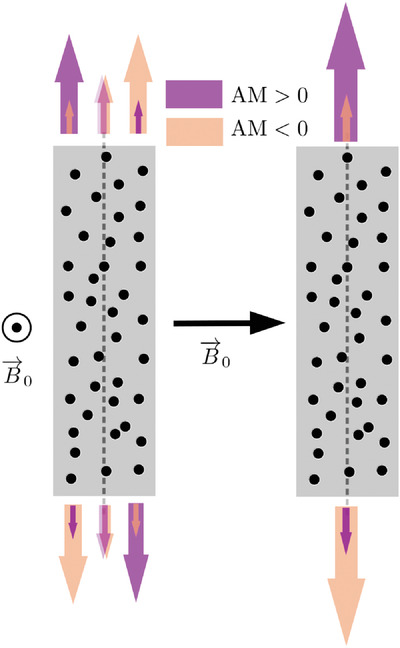
A new understanding of the directional coupling of emitters onto waveguides is reached by studying the symmetries and symmetry-breakings of the emitter-waveguide system. The angular momentum of the emissions, not their polarization handedness, is the key handle, and directionality scales exponentially with transverse angular momentum. A new coupling selection rule is found, and experiments for directionally aggregating many emissions proposed.
Research Articles
Highly Efficient and Broadband Achromatic Transmission Metasurface to Refract and Focus in Microwave Region
- First Published: 12 November 2021
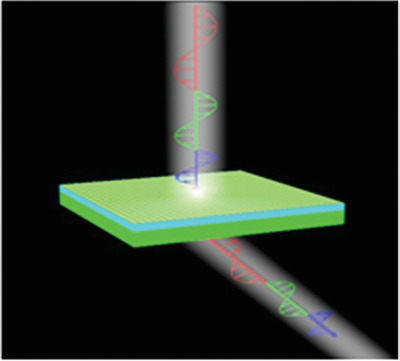
In this paper, broadband highly efficient achromatic transmission by a metasurface is achieved. The phase and dispersion of meta-atoms can be controlled independently and any phase curve can be designed as is desired. An achromatic deflector and an achromatic lens are designed and the samples are fabricated. The experimental results demonstrate the concept and theory.
Interpolarization Forward Stimulated Brillouin Scattering in Standard Single-Mode Fibers
- First Published: 12 November 2021
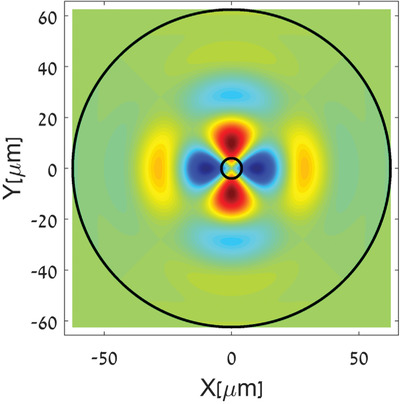
Interactions between light and sound waves copropagating in standard optical fibers are studied in analysis and experiment. The effects strongly depend on the polarization of light. Agreement between model and measurement is very good. The analysis predicts the stimulation of acoustic vortex beams by optical waves.
Single Pulse Manipulations in Synthetic Time-Frequency Space
- First Published: 12 November 2021
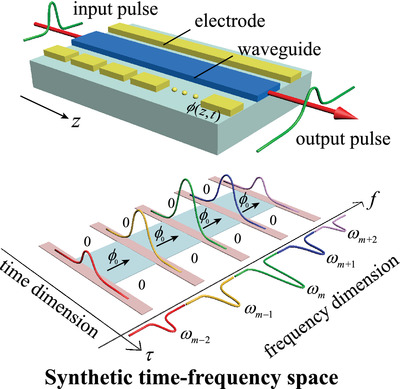
A synthetic time-frequency space is proposed when light propagates in a dispersive waveguide under dynamic phase modulation. By introducing and controlling the effective non-uniform gauge potential in multiple ways, a rich set of pulse propagation behaviors have been shown, including confined pulse propagation, fast/slow light, and pulse compression.
Lasing in a Hybrid Rare-Earth Silicon Microdisk
- First Published: 12 November 2021

Optical gain and lasing in a compact rare-earth silicon hybrid microdisk resonator are presented. The laser is monolithic, low-cost, and straightforward and uses standard silicon photonics foundry fabrication steps. The hybrid microdisk exhibits single-mode lasing at 1906 nm with more than 1 mW total on-chip output power and a slope efficiency versus absorbed pump power of 60%.
Analogous Optical Activity in Free Space Using a Single Pancharatnam–Berry Phase Element
- First Published: 13 November 2021
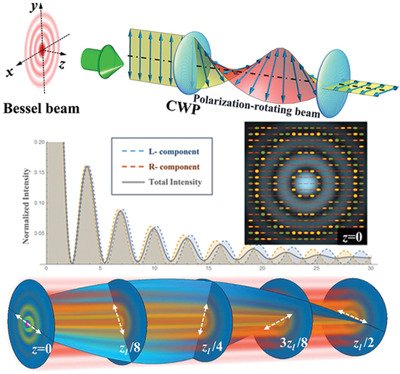
An analog of optical activity is demonstrated in free space by using liquid-crystal Pancharatnam–Berry-phase plates, which supports the direction-dependent polarization rotation (leverotation and dextorotation) of a Bessel beam with controllable “rotatory power.” Such a polarization rotation can be revoked by another plate with the same structure, promising for applications non-magnetic optical devices such as optical isolators.
NaAlSiO4: Eu2+ Glass Ceramics: Self-Reduced In Situ Growth and High-Power LED/LD Lighting
- First Published: 13 November 2021
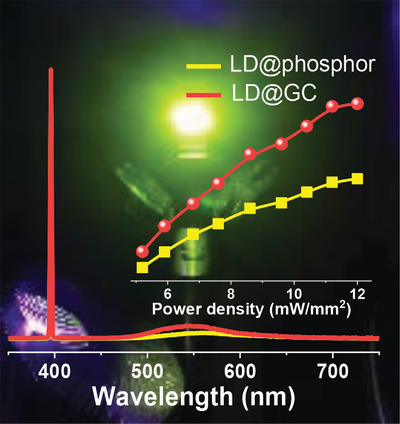
An in situ glass crystallization strategy combined with self-reduced Eu2+ inside aluminosilicate glasses is proposed to fabricate Eu2+ doped NaAlSiO4 glass ceramic composites in air. The glass ceramic composites exhibit high apparent luminous efficiency ≈70%, intrinsic luminous efficiency ≈100% and super thermal stability, which can find practical applications in high-power LED/LD lighting.
Metasurface-Enabled High-Resolution Liquid-Crystal Alignment for Display and Modulator Applications
- First Published: 15 November 2021

Liquid crystals (LCs) and metasurfaces are synergistically merged for optical multifunctions. The specially designed metasurfaces can provide high-quality alignment of LCs. Meanwhile, the aligned LCs are also used to actively control the plasmonic resonances of metasurfaces. The synergy of LCs and metasurfaces can enable a designed optical device to work simultaneously in both visible and near infrared ranges.
Mode and Polarization-Division Multiplexing Based on Silicon Nitride Loaded Lithium Niobate on Insulator Platform
- First Published: 10 December 2021

Mode and polarization-division multiplexing technologies are investigated in a silicon nitride loaded lithium niobate on insulator platform. The fabricated mode and polarization (de)multiplexers show low insertion losses (<1.5 dB) and low crosstalk (<−13 dB) for a 40 nm wavelength range (1525–1565 nm), while a 40 Gbps data transmission experiment demonstrates their good capabilities in data communication.
Observation of Quadratic (Charge-2) Weyl Point Splitting in Near-Infrared Photonic Crystals
- First Published: 10 December 2021
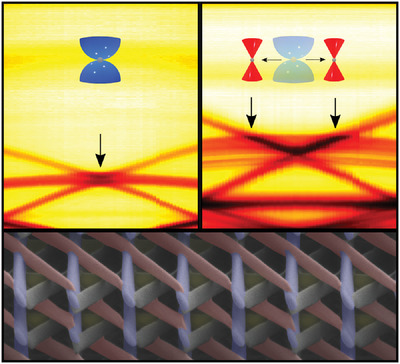
Weyl points are topological degeneracies in the band structure of periodic media that are robust against perturbations due to their integer topological charge. Splitting of a quadratic Weyl point of charge-2 into two linear Weyl points with charge-1 in 3D micro-printed photonic crystals is experimentally demonstrated. Their angle-resolved spectrum in the near-infrared is measured via Fourier-transform infrared spectroscopy.
Integrated Gallium Nitride Nonlinear Photonics
- First Published: 11 December 2021
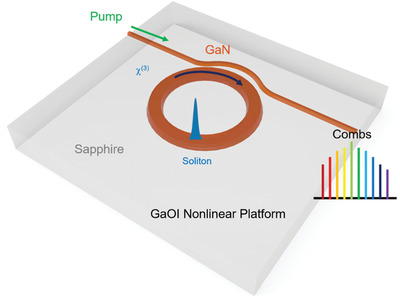
Gallium nitride is a wide bandgap material widely used in solid-state lighting as well as semiconductor power devices. With wide transparency window ranging from ultraviolet to mid-infrared and large nonlinear refractive index, GaN on sapphire (GaNOI) is a promising platform for integrated nonlinear optics. Parametric oscillation threshold as lows as 6.2 mW is recorded in a 60-µm-radius GaN microring with an intrinsic quality over 106, and Kerr solitons are generated with the high-Q GaNOI microresonator. This work paves the way for integrated gallium nitride nonlinear photonics.
Realization of Exciton-Mediated Optical Spin-Orbit Interaction in Organic Microcrystalline Resonators
- First Published: 11 December 2021




